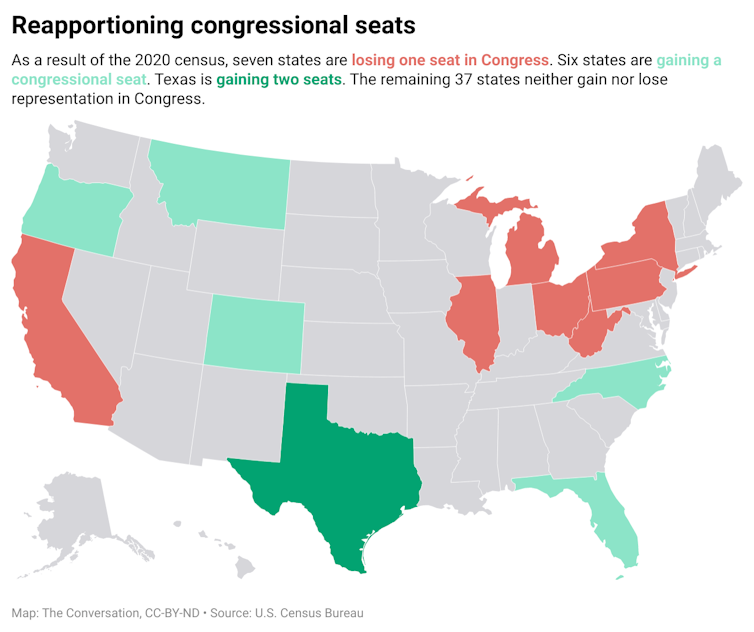
Understanding vaccine effectiveness stats can help you weigh the risks of travel.
AP Photo/Rick Bowmer
Ellen Peters, University of Oregon
Understanding numbers in the news or social media can empower you to figure out risks and make good choices. Here's what to look out for to make sure you aren't misled by COVID-19 coverage.
|
Politics + Society
|
-
Dudley L. Poston Jr., Texas A&M University
The US Census Bureau has announced which states will gain and lose representation in Congress as a result of the 2020 census. Here's how it makes the calculations.
|
|
Economy + Business
|
-
Amitrajeet A. Batabyal, Rochester Institute of Technology
If China's economy recovers from the pandemic, its authoritarian political system could become even more influential around the world.
-
Alexander Davidson, Wayne State University
This finding was a surprise, since consumers actually seem to think liberals will provide better service.
|
|
Ethics + Religion
|
-
Sarah Imhoff, Indiana University
During the Cold War, the FBI boasted a 'Judeo-Christian' heritage in the US but also demonstrated anti-Jewish prejudice.
|
|
Environment + Energy
|
-
Karen D. Holl, University of California, Santa Cruz; Pedro Brancalion, Universidade de São Paulo
Planting trees is a popular way to do something for nature, but putting seedlings in the ground is just the first step. And without long-term care, those sprouts may not last.
|
|
Health
|
-
Jae A. Puckett, Michigan State University
The survey also found that trans people who live in their affirmed gender report experiencing less stigma, anxiety and depression.
|
|
Science + Technology
|
-
Ryan Calo, University of Washington
The Federal Trade Commission is rattling its saber at the technology industry over growing public concern about biased AI algorithms. Can the agency back up its threats?
|
|
From our international editions
|
-
James Dyke, University of Exeter; Robert Watson, University of East Anglia; Wolfgang Knorr, Lund University
Prominent academics, including a former IPCC chair, round on governments worldwide for using the concept of net zero emissions to 'greenwash' their lack of commitment to solving global warming.
-
Steven Friedman, University of Johannesburg
In the country’s insider politics, the majority who try to survive outside the formal economy are talked about, but are never heard.
-
Michael Head, University of Southampton
Stories of reaching herd immunity were certainly premature.
Today’s graphic

|
|